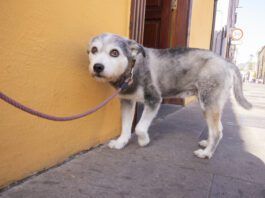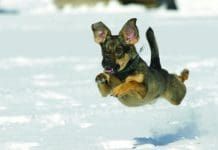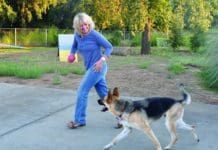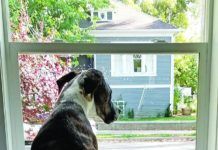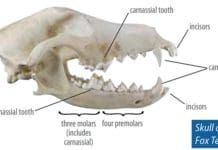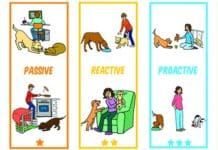Understanding Canine Compulsive Disorder
Also called compulsive behavior disorder, this is a mental health disorder characterized by the excessive performance of repetitive behaviors that don't serve any apparent purpose
Genetic Health Screening for Dogs
While most owners are familiar with genetic tests to determine the ancestry of mixed-breed dogs, many are not aware that a number of companies have expanded into testing for genetic health disorders. The companies typically advertise these tests as having the potential to both save money and heartache by giving owners an opportunity to prevent or detect diseases in their earliest stages, in order to add health-filled years to our beloved canine companions' lives. But is this rosy promise even possible?
How Much Sleep Do Dogs Need?
Activity can affect sleep time for dogs. Working dogs sleep less than inactive dogs. Inactive dogs also may have unusual sleep/wake cycles. This might be because many dogs are home alone during the daytime, and thus, they sleep. When owners come home, the dog becomes active. This daytime inactivity can lead to wakefulness at night, when the rest of the house is asleep. It's a good idea to leave interesting toys for your dogs when you are gone for the day. Daily exercise for at least 15-30 minutes also promotes healthy sleep patterns...in everyone!
Dog Drooling: The Juicy Truth About Why Dogs Slobber
It is not abnormal for your dog to drool sometimes. Pavlov showed in his famous bell experiments that anticipating a meal can make a dog salivate. Fear can also cause dogs to drool, as you will see in a storm-phobic dog. Drooling is a form of heat control for dogs called evaporative cooling. So, the answer is yes! Drooling can be normal and in response to the dog's emotions or environment.
Are Dogs More Fearful Than They Used to Be?
An increasing percentage of clients are bringing dogs to me for help with fear-related behaviors. Many of my fellow behavior professionals agree: They, too,...
How to Stop a Dog’s Unwanted Behavior in Five Steps
Most of the time, when dogs do something we don't want them to do (such as stealing our socks or jumping on our elderly...
Moving with Dogs: Everything You Need to Know
Moving to a new house regardless of whether it's down the street or across the country is stressful for anyone, but for dogs it can be especially confusing and upsetting. I just moved my three dogs (ages 16 years to 21 months, 10 pounds to 100 pounds) from New York City to Portland, Oregon. The move has been a bit hectic, but my biggest priority has been creating stability and consistency for my dogs.
Dogs vs. Wolves
This excerpt is the first chapter of Dog Smart, a new book by Linda Case, MS, founder and head trainer at AutumnGold Dog Training Center in Mahomet, Illinois, and the author of a number of books on training and animal nutrition. Case also taught at the University of Illinois Department of Animal Sciences and College of Veterinary Medicine for 20 years.
Barkaholics: How to Stop a Dog from Barking
that the behavior annoys everyone nearby.Determining the reason for your dog's barking is key to solving it. For example, you will take a different tack with a dog who barks to demand your attention (like this little dog) than a dog who barks in excitement at other dogs.üDon't punish for barking - it's not very productive in the long run.üüThe author's dog, Shadow, is living proof that all of the exercises and techniques described here really work! Her barking has reduced in frequency by about 80 percent, and she continues to improve.
Fighting Through The Fence
Fence aggression barking, lunging, and fence-fighting is an all-too-common canine behavior. It can also be a very difficult behavior to live with. A dog who is left for long periods of time (especially) in an enclosed yard can easily become frustrated and aroused by dogs being walked past her space and her inability to interact with those dogs. That frustration often turns into aggression, and the aggression can become very serious. Dogs can even be grieviously injured or even killed if they are able to grab another dog (or part of a dog) through a fence.
Properly Supervising Dogs
Five types of dog-to-dog supervision, from left to right (or from 1 to 4 stars): No adult supervising dogs; Adult present but distracted; Reacting after the dogs are too close; Having a plan, being prepared; Fully present, adult supervision
Do Dogs Smile?
A well-accepted theory among dog behavior experts is that dogs smile because they know that we humans love it. We see our dogs lounging on the rug with their mouths hanging open, lips pulled back, looking utterly satisfied with themselves, and we go ga-ga with praise and pets. Dogs probably also observe their humans smiling at them and among themselves; they know people smiles are inherently positive (at the very least, benign), and that they can communicate amicability by miming that behavior.



